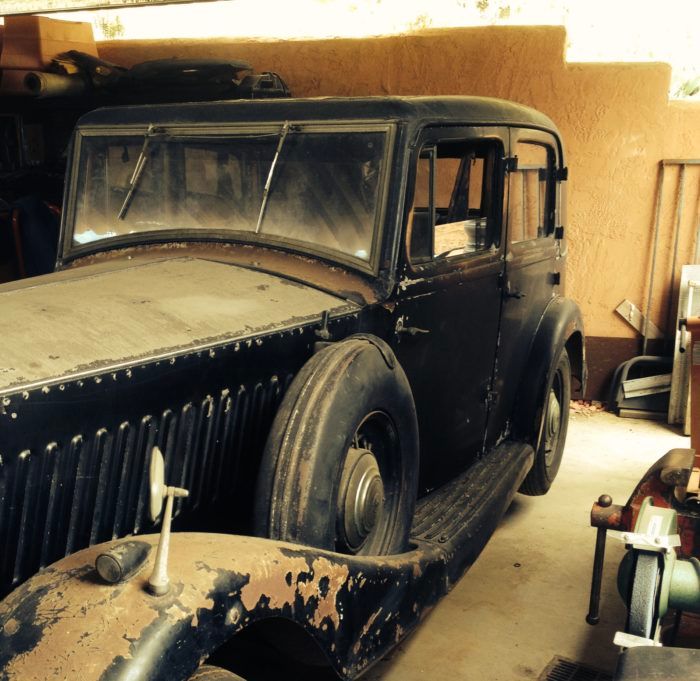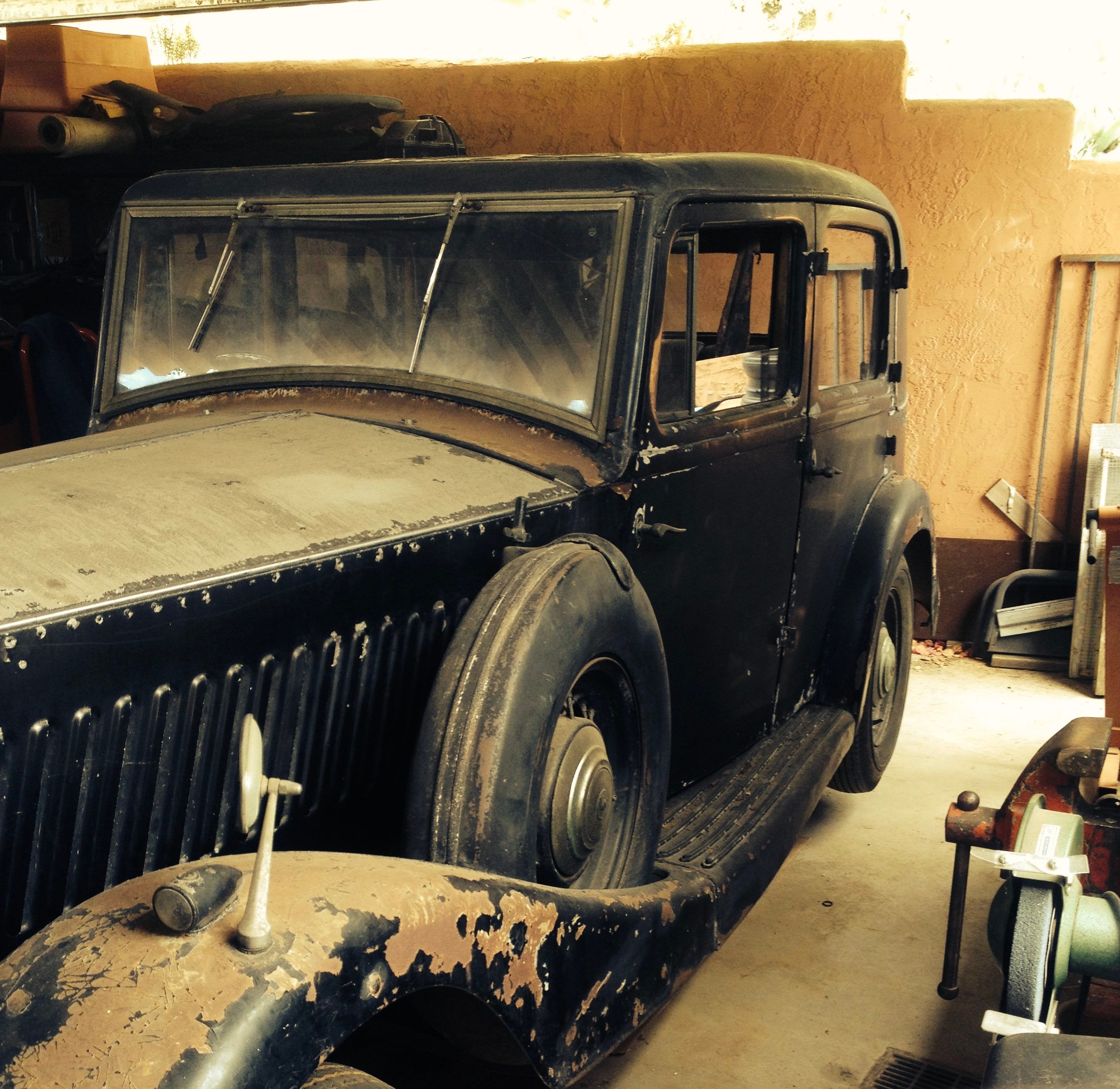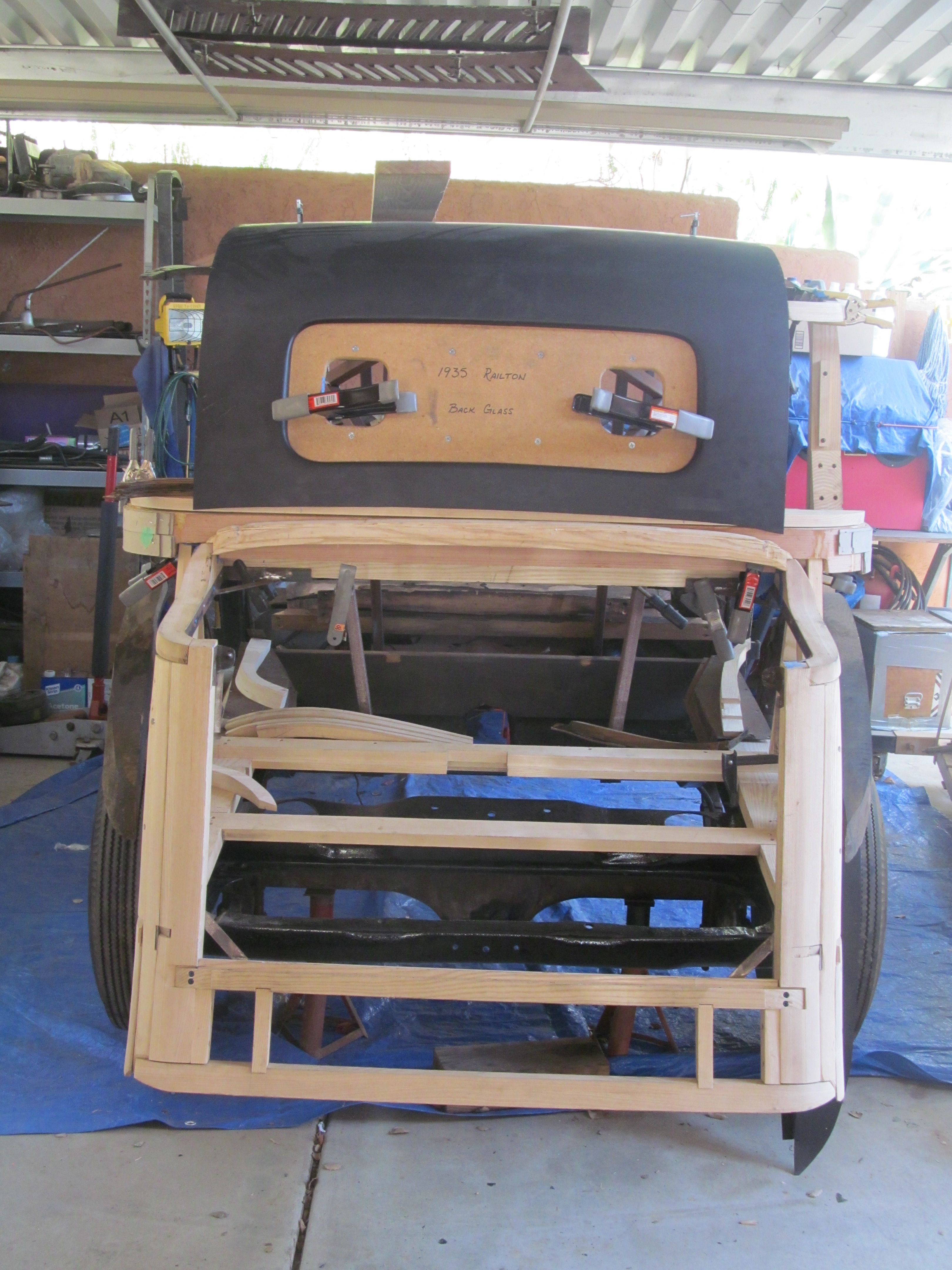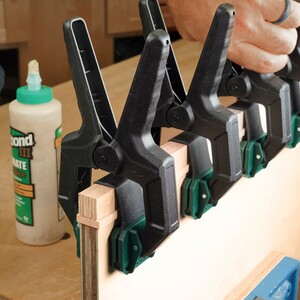Woodwork in Automotive Restoration

In the mind of a car builder, we have to reason as to why and how. In reverse engineering a 1930’s era Railton, it is a challenge to understand and reason as to why it was designed this way, and how it was done then and how can I make it now.
I was first approached roughly a year ago by Richard Esparza of Escondido, California about an extensive project in the preservation and restoration of automobile history. A 1935 Railton, which is, based on a Hudson rolling chassis with a right hand drive. At first look, the project made me question my skills as a craftsman, not knowing what I was capable of. However, true to Rick Perez’s life, in any kind work, I do whatever is most challenging at that moment in life, as life itself is too sedentary to not take up such tasks.
Questions rolled through my head as to why the joinery was done this way and not that way. The very next question in every case was how did they produce this? It was clear that it would be a master class in self discovery as well as being thrown in the fire in using hand tools similar to those in carriage building. After all, it is a horseless carriage.
Looking at all the joints, the miter, the tenons, the half laps, and minimal use of brackets, it became clear that movement was key in the success of this car in its life on the road. There was no evidence of glue, only a few tar impregnated strips of cloth for what I assume was waterproofing in joints and squeak prevention.
This Railton is presumed to be formerly owned by John Weller, one of the designers of the world renowned AC Cobra. It came equipped with adjustable suspension, a straight eight motor, and dual electric fuel pumps. It would have been a monster on the road in its prime. Rolls Royce or Bentley of the time were envious of what this muscle-bound, light-framed car could accomplish.
On my journey towards what became an obsession in accuracy, I quickly learned that if you have a few tools like a drawing knife, bench chisels a spoke shave, a modest selection of hand planes and a table saw, you can achieve just about any shape in wood that you desire. Patience and the willingness to learn as you work are the virtue here. Never be afraid to fail and try new things, as the rewards are boundless! We all, as craftsmen, can rise to the challenge… you just have to do it.
The car is one of just about 200 left on the planet, with less everyday. Since it is the Saloon model, it’s a task of importance and a challenge, as there is very little information on how the actual frame work was built where repairs and rot had eaten away at the technology of the past.
I understand now how these projects get into one’s blood as it has mine, just as it did with my father in law Richard Esparza and his life long love of the Hudson Automobile.





















Log in or create an account to post a comment.
Sign up Log in